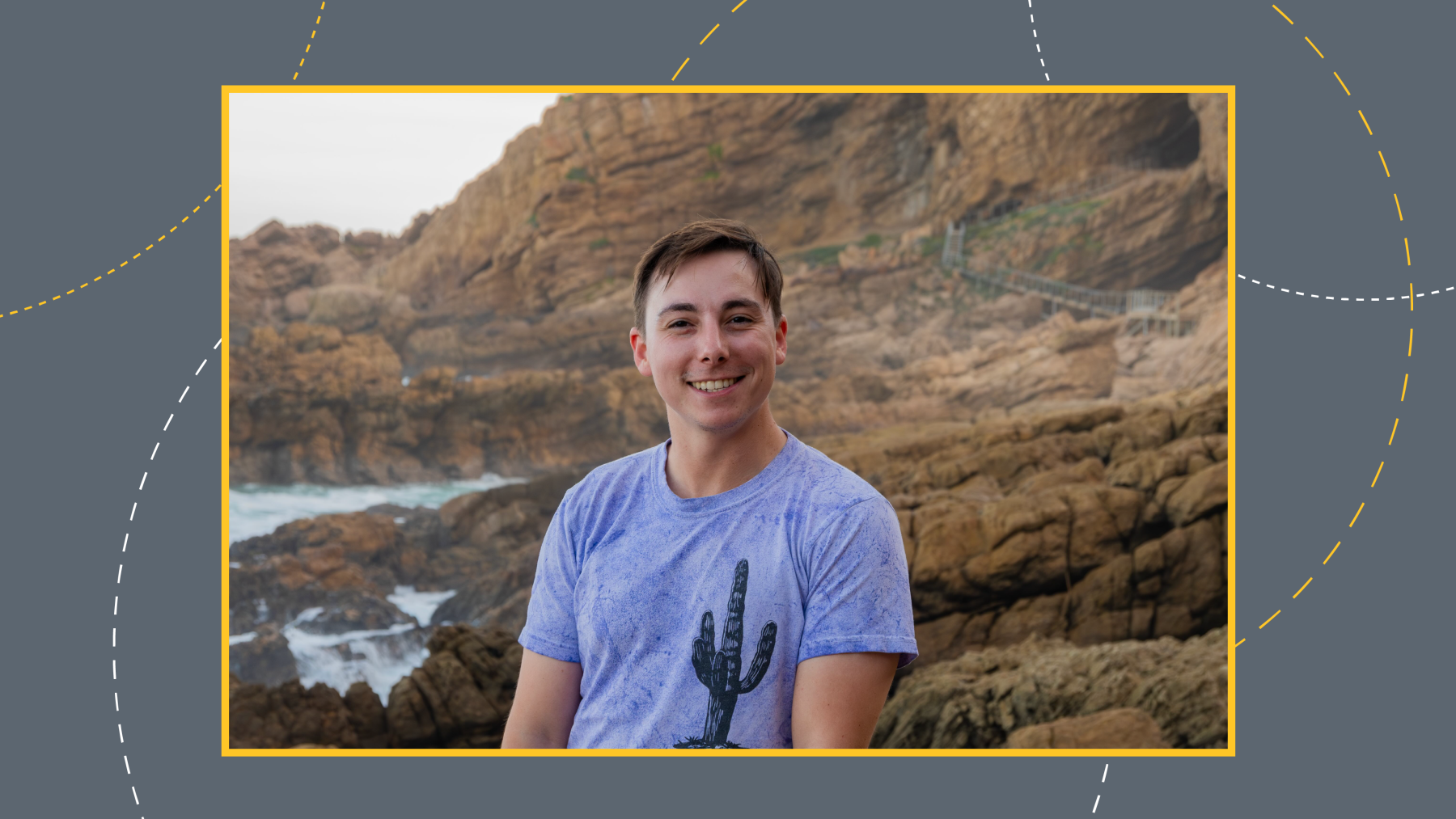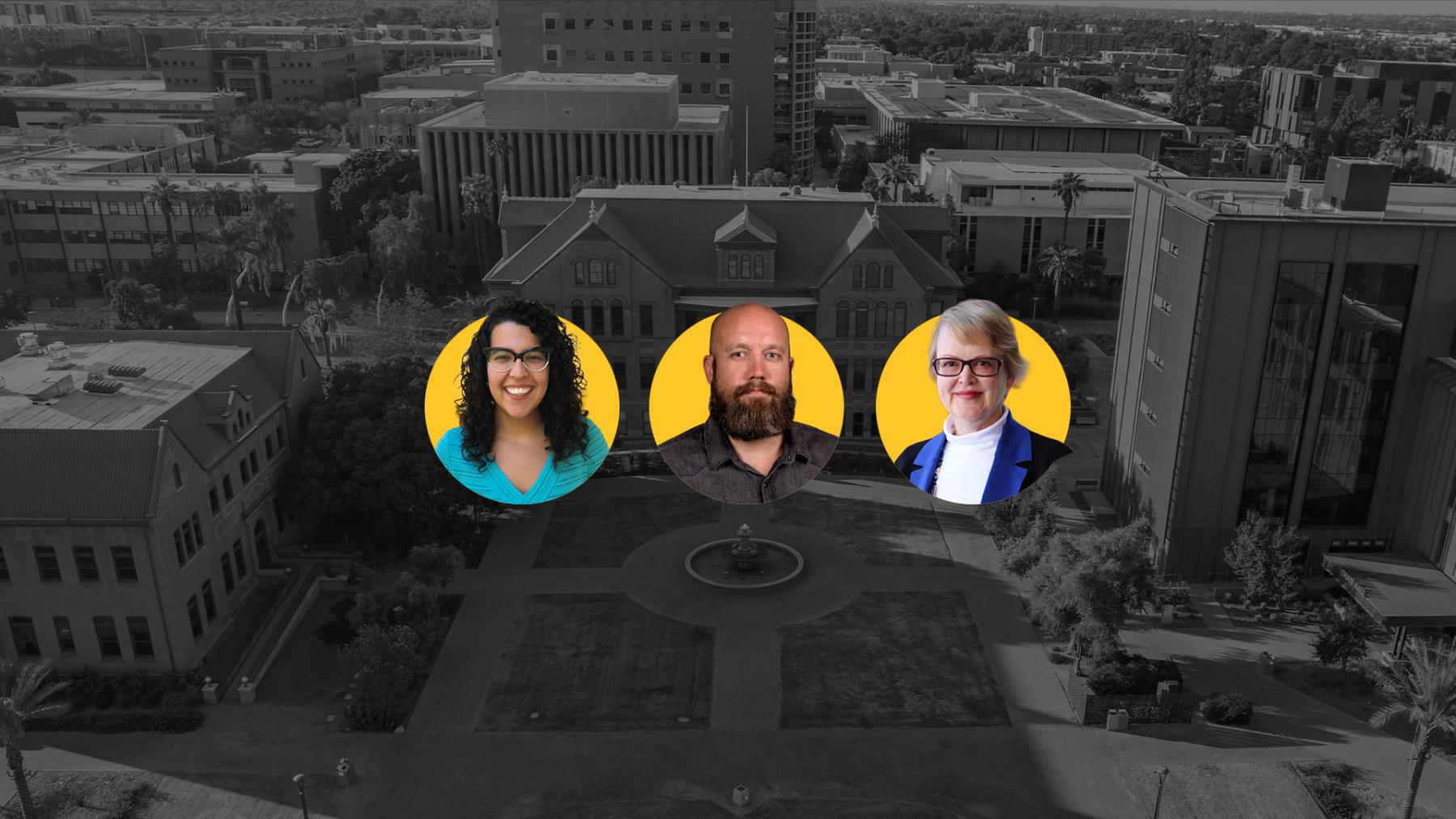
Uncovering ancient climate adaptations: A Fulbright experience in South Africa
In this Q&A, we dive into the inspiring journey of Patrick Fahey, a PhD candidate in anthropology at the School of Human Evolution and Social Change in The College of Liberal Arts and Sciences at ASU. He was awarded a prestigious 2023-24 Fulbright Open Study/Research Award. Fahey went to South Africa to uncover how ancient humans adapted their diets in response to climate change, shedding light on pivotal moments in human evolution. The Fulbright experience advanced his research and allowed him to engage deeply with the local culture and communities.
Fahey presented his research at a South African Society for Quaternary Research conference, where he formed valuable relationships with local scientists. Learn more about Patrick's hopes to continue working in South Africa to bridge cultural and academic divides and contribute to understanding humanity's shared origins.
What inspired you to pursue a Fulbright fellowship?
I've been conducting research in South Africa since 2019, typically over the summer, to work on archaeological excavations and in the lab. While I've spent a lot of time in South Africa, I've always been so busy collecting data that I've had few chances to explore the country and meet people besides other archaeologists. Analyzing fossils is very time-consuming, and I spent every chance in the lab collecting data to get the large sample I needed for my research. The Fulbright program provides a fantastic opportunity to spend nearly a year in the country. Not only would I have time to analyze the thousands of fossils that make up the base of my dissertation research, but it would also allow me to really experience South Africa. I'm mid-way through my Fulbright, and it has provided me with many chances to experience the culture and meet so many amazing people in South Africa.
Can you share a particularly memorable moment from your Fulbright experience that shaped your perspective or research?
I presented my research to the South African Society for Quaternary Research, and at this conference, I met many scientists working in my field. Forming relationships with South African researchers was an amazing opportunity, and I am excited for these to blossom into future collaborations.
How has your research as a Fulbright Student contributed to bridging cultural or academic divides between your home country and the host country?
The Fulbright allows me to train a cohort of young Southern African archeologists; hands-on experiences with laboratory analyses are vital for aspiring archaeologists. I'm grateful I can provide a funded opportunity to bring students from all over southern Africa to my lab for seven weeks. While here, I will train them and they will get to analyze many fossils. These students can bring their new expertise back home and apply the methods to other archaeological sites. I hope to collaborate more with these students in the future and foster relationships between young African and American researchers.
How have you engaged with local communities or organizations in your host country, and how have these collaborations impacted your work?
I am helping redesign a museum display on the Stone Age history of my host town, Mossel Bay, in a newly built interpretive center. I have a background in graphic design and am excited to volunteer this skillset to help make a new display. Some of the most ground-breaking Stone Age research has taken place in Mossel Bay, much to the surprise of many of the town's visitors who come for the beautiful beaches. I'm working with the town and museum staff to bring this story to life with a museum display that everyone can enjoy. Working with the museum staff has been amazing! Their passion for the deep history of their home is infectious and I have learned a lot about their culture.
What are the main objectives of your research at Pinnacle Point in South Africa, and how does it contribute to our understanding of human evolution and climate adaptation?
I am studying the animal fossils from the Middle Stone Age site of Pinnacle Point 5-6, which humans inhabited from 100,000 to 50,000 years ago. These people were some of the first to display all the complex behaviors we associate with modern humans, like making intricate tools and creating art. My research focuses on the animal bones they tossed out after eating, from which I can reconstruct part of their diet and better understand the role humans played in their ecosystem. This period is during the Late Pleistocene, which is defined by some of the most dramatic changes in the global climate; I'll link human ecology with the local and regional environmental changes other researchers have reconstructed. From this, we'll better understand how some of our species' earliest members adapted to climate change and the ecological context for the origins of our distinct human behaviors.
What techniques will you use to analyze the faunal remains at Pinnacle Point, and how do these methods help reconstruct ancient human diets?
I record dozens of attributes for each fossil I analyze; all are necessary to understand the history of the individual fossils and the ancient people who accumulated them. One aspect of this data collection is to understand taphonomy, which is the study of all the processes that affect organic material from the death of the organism up through the excavation and curation of the specimens. I can reconstruct an individual fossil's history by recording how the bone broke, if it was burnt, looking for human butchery activity like stone tool cut marks or other carnivore tooth marks and other processes that can affect skeletal material over tens of thousands of years. From this information, I can reconstruct how bones arrived at an archaeological site and factors that may create biased interpretations of human behavior derived from them.
The other aspect of the analysis focuses on the types of species the fossils represent to reconstruct the human diet. From this, I can analyze changes in the animal community and their prey selection at Pinnacle Point 5-6 over the 50,000 years humans occupied the site. Changes in diet often represent changes in the environment but can also reflect changes in human mobility, foraging abilities, social structure, population density and many other social factors. When the taphonomic and ecological data from these animal fossils are combined with other archaeological evidence, we can fully understand how these humans lived.
How will your Fulbright research and experiences in South Africa influence your future career goals, particularly your aspiration to become a professor and science communicator?
I plan to work in South Africa for the rest of my career as an archaeologist, and the experiences I have had here during my Fulbright have opened up so many new doors. The relationships I've formed with South Africans here are the most important thing I've gained. I've made lasting friendships here, which gives me reasons to return beyond just research. Many of the friends I've made are fellow scientists, and our future collaborations will be fun ways to reconnect and important for generating new scientific knowledge. Sharing resources and expertise between the US and South Africa can only strengthen our research and help uncover the story of humanity's shared origins.
The Fulbright Program is the flagship international educational exchange program sponsored by the U.S. government and is designed to increase mutual understanding between the people of the United States and the people of other countries. The primary source of funding for the Fulbright Program is an annual appropriation made by the U.S. Congress to the U.S. Department of State, Bureau of Educational and Cultural Affairs. Participating governments, host institutions, corporations, and foundations in foreign countries and in the United States also provide direct and indirect support. Recipients of Fulbright grants are selected on the basis of academic or professional achievement, as well as demonstrated leadership potential in their fields. The Program operates in over 160 countries worldwide.
More stories from the Graduate Insider

Graduate education is an adventure
About eighteen months ago, I set out on a journey walking the islands of the Dodecanese during a sailing trip in Türkiye and Greece with several friends. Along the way, I found winding paths, timeless villages and breathtaking views of sea and sky. That experience got me thinking about how adventure shows up in other parts of life, especially in learning.

From practice to presentation: How to deliver a winning faculty job talk
Giving a job talk can feel like the most high-stakes presentation of your academic job search. It’s not just a research seminar—it’s your opportunity to demonstrate vision, communication skills, and fit within a department. In a recent Lunch and Learn, faculty members Associate Professor in School of International Letters and Cultures, Anita Huizar-Hernandez, Professor in School of Life Sciences Jeffrey Jensen, and Professor in Department of Physics Patricia Rankin shared concrete strategies to help graduate students and postdocs succeed as future faculty candidates.

Mentoring matters: Mentoring students through impostor syndrome
Graduate education can be an exhilarating journey — but for many students, it also brings moments of self-doubt and uncertainty. In our recent Mentoring Matters panel, “Mentoring Students Through Impostor Syndrome,” Graduate College Senior Associate Dean Dr. Lisa Anderson sat down with Dr. Rebecca Wachs, Associate Professor in the School of Biological and Health Systems Engineering, and Dr.